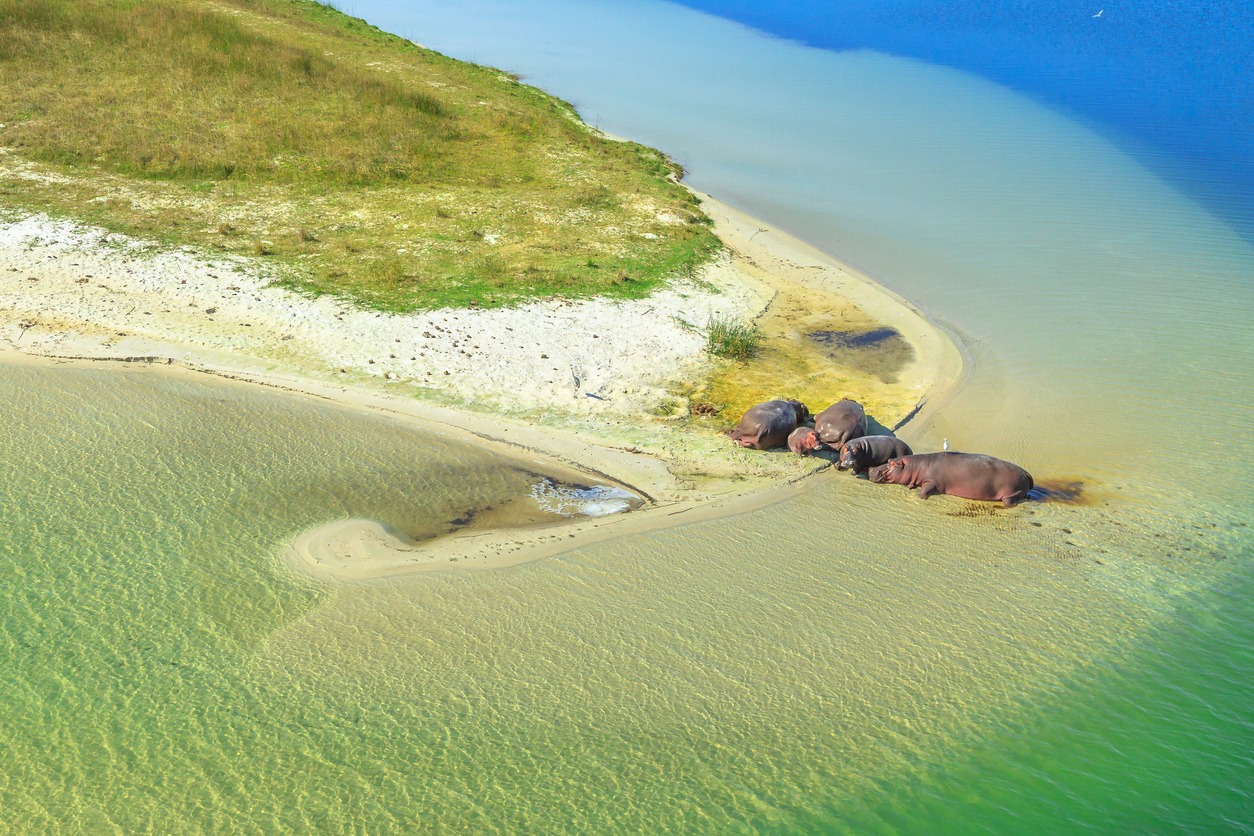St Lucia Wetland Park or now known as the iSimangaliso Wetland Park, is a wonder and wildlife paradise. It is South Africa’s very first UNESCO World Heritage Site since 1999 and the third largest protected area in the region. Located in KwaZulu Natal, the wetland park covers 328,000 hectares of stunning scenery and an incredible range of habitats and wildlife.
St Lucia Wetland Park comprises a complex ecosystem with magnificent landscapes. It boasts a montage of habitats containing greater biodiversity than Okavango Delta and Kruger National Park.
The five inextricably linked ecosystems include a marine system comprising of coral reefs, beaches, and canyons from the Indian Ocean; an inland system characterized by dry savannah woodlands and shoreline terraces; coastal dune system encompassing sub-tropical forests, high linear dunes, wetlands, and grassy plains, lake systems covering estuaries and freshwater lakes; and swamp system containing vast reeds, swamp forests, and marshes.
Such a mosaic of habitats and landforms in an extensive area is a sight to behold. The wetland offers picturesque vistas while supporting Africa’s marine, savannah, coastal, and wetland environments and serving as a home for an extensive and impressive range of wildlife species.
Animals of all sorts can be seen in the wetland park, such as hippos, and crocodiles occur in significant numbers, particularly on the St Lucia estuary. The largest mammals, the humpback whale (in water), and the African Elephant (on land) can also be spotted in the area. Other mammals thriving in the park include buffalo, zebra, kudu, eland, nyala, antelopes, and rhino.
The wetland park also serves as a water wonderland as it homes several endemic fishes in its lakes. Meanwhile, the Indian Ocean is brimmed with other whales, dolphins, tropical fishes, and coral reefs. Even the world’s fish, the coelacanth, occurs in its marine range.
St Lucia Wetland Park also has one of the most diverse species of frogs. Often, their loud choruses can be heard at night and on rainy days. A wide variety of snakes species also exists in subtropical and coastal dune forests. Meanwhile, marines turtles, such as Loggerhead Turtles and Leatherback Turtles, breed in St Lucia Wetland Parks’ protected beaches.
Lastly, what the wetland park is most known for is its prolific and staggering range birdlife. Over 500 species of birds, both resident and migrant birds such as pelicans, flamingoes herons, geese, and ducks, occur in its wetland, marine, and forest systems.
St Lucia Wetlands Parks is the ideal destination for an extraordinary game experience. Enjoy a wide range of activities from boating, scuba diving, bird-watching, camping, and hiking, in which you can afford to get up to close the environment and its stunning wildlife.
HOME | AFRICAN MAMMALS LIST | AFRICAN BIRDS LIST | AFRICAN TREES LIST | WILDLIFE SAFARI HABITATS

